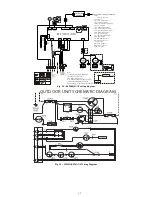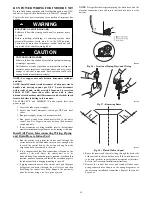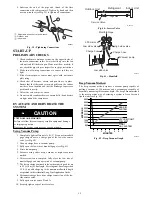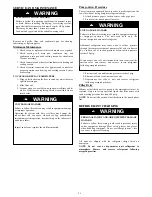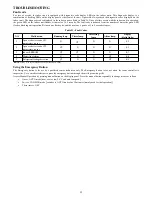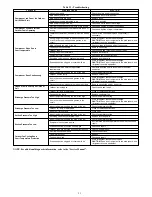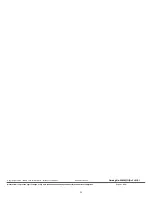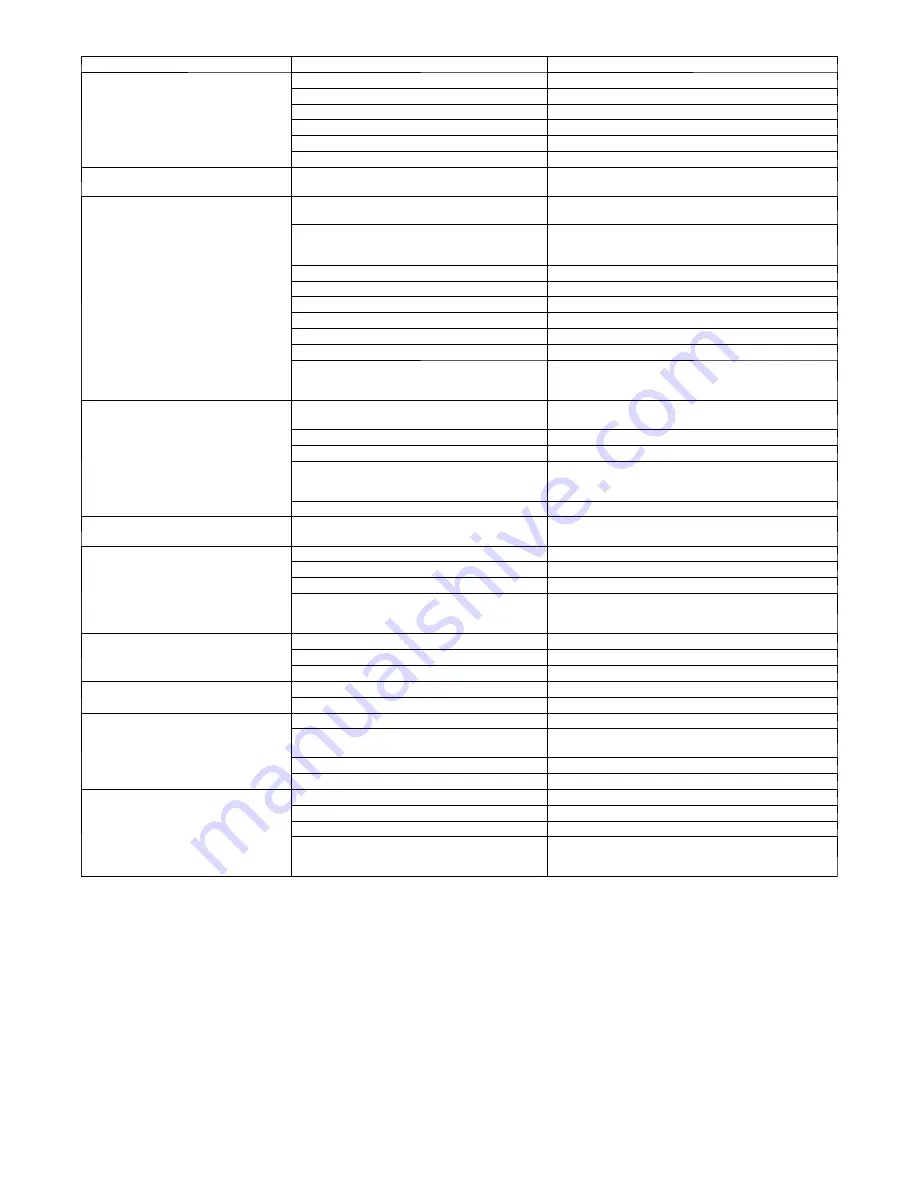
23
Table 22 – Troubleshooting
PROBLEM
POSSIBLE CAUSE
SOLUTION
Compressor and Fan of the Outdoor
Unit Will Not Start
Unit not energized
Check the main power connection.
Main switch is set to OFF
Check and put it to ON position.
Main switch fuses are blown
Replace fuses.
Compressor cycling protection is on
Wait for 3 minutes.
Main power voltage is too low
Check and set to the correct voltage.
Electrical connections are too loose or are wrong
Check and tighten or correct connections.
Compressor Will Not Start, But
Outdoor Fan is Operating
Electrical connections of compressor are loose or
wrong
Check and tighten or repair compressor.
Compressor Stops Due to
Over---temperature
Compressor burnt out; seized or protection device
on
Check for the cause and replace compressor if
necessary.
Wrong refrigerant charge in unit (excessive or low)
or air or other non---condensable gasses in the
circuit
Drain refrigerant, evacuate and recharge.
CAUTION
: Do not vent refrigerant to the atmosphere; use
refrigerant recovery equipment.
Main voltage is too high or too low
Check voltage setting and adjust if necessary.
Condenser coil obstructed
Remove obstruction.
Outdoor fan off
Check cause and resume operation or repair.
Wrong indoor unit thermistors
Replace thermistors.
Refrigerant circuit clogged
Check and remove obstructions.
Reversing valve faulty on heat pump models
Replace reversing valve.
Expansion device clogged or covered with ice
Drain refrigerant, evacuate and recharge.
CAUTION
: Do not vent refrigerant to the atmosphere; use
refrigerant recovery equipment.
Compressor Runs Continuously
Unit selected is too small for application
requirements
Contact a qualified service technician for a system
evaluation.
Indoor temperature setting too low or too high
Check temperature setting.
Outdoor unit fan faulty
Replace outdoor fan.
Air or other non---condensable gasses in the
circuit
Drain refrigerant, evacuate and recharge.
CAUTION
: Do not vent refrigerant to the atmosphere; use
refrigerant recovery equipment.
Obstructions at air intake or dirty indoor unit filters
Remove obstruction and/or clean filter.
Frequent Ice---Build---Up on Outdoor
Coil
Outdoor fan is stopped
Check cause and repair.
Discharge Pressure Too High
Outdoor coil dirty or obstructed
Clean or remove obstructions.
Condenser fan faulty
Replace condenser fan.
Indoor temperature setting too low or too high
Check temperature setting.
Air or other non---condensable gasses in the
circuit
Drain refrigerant, evacuate and recharge.
CAUTION
: Do not vent refrigerant to the atmosphere; use
refrigerant recovery equipment.
Discharge Pressure Too Low
Indoor temperature setting too high or too low
Check temperature setting.
Outdoor coil dirty or obstructed
Clean or remove obstructions.
Indoor unit air filter dirty
Clean filter.
Suction Pressure Too High
Indoor temperature setting too high or too low
Check temperature setting.
Reversing valve faulty or internal leak
Replace reversing valve.
Suction Pressure Too Low
Indoor temperature setting too high or too low
Check temperature setting.
Evaporator coil covered with ice
Air circulation on the evaporator not sufficient; check and
repair.
Expansion device or suction line clogged
Check and repair.
Outdoor fan does not stop during defrost periods
Check electrical parts.
Outdoor Fan Cycling Due to
Over---Temperature Protection
Electrical connection loose
Check connections.
Fan motor burn out
Replace.
Fan bearing seized
Check and repair.
Expansion device clogged or covered with ice
Drain refrigerant, evacuate and replace.
CAUTION:
Do not vent refrigerant to the atmosphere; use
refrigerant recovery equipment.
NOTE
:
For additional diagnostic information, refer to the “Service Manual”.









